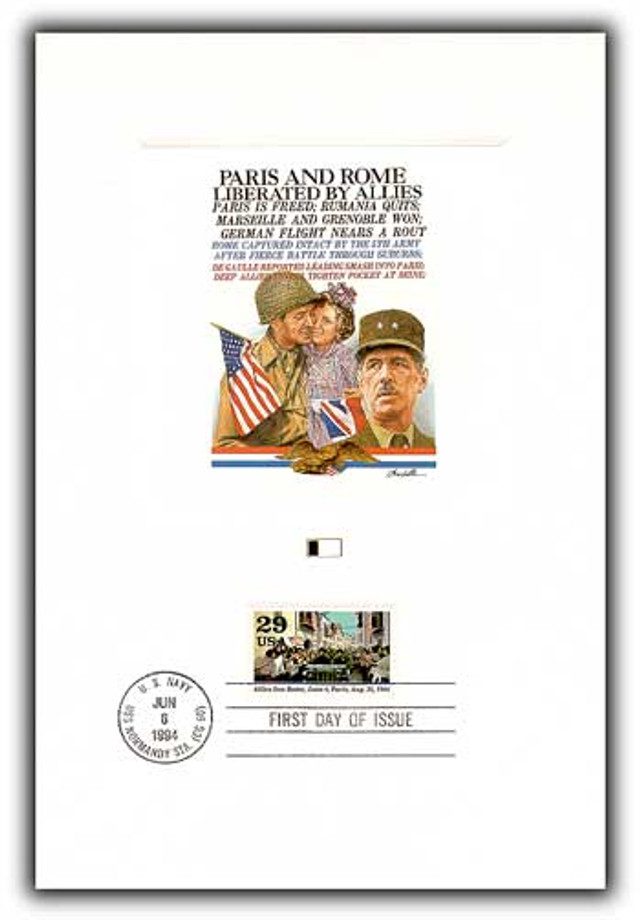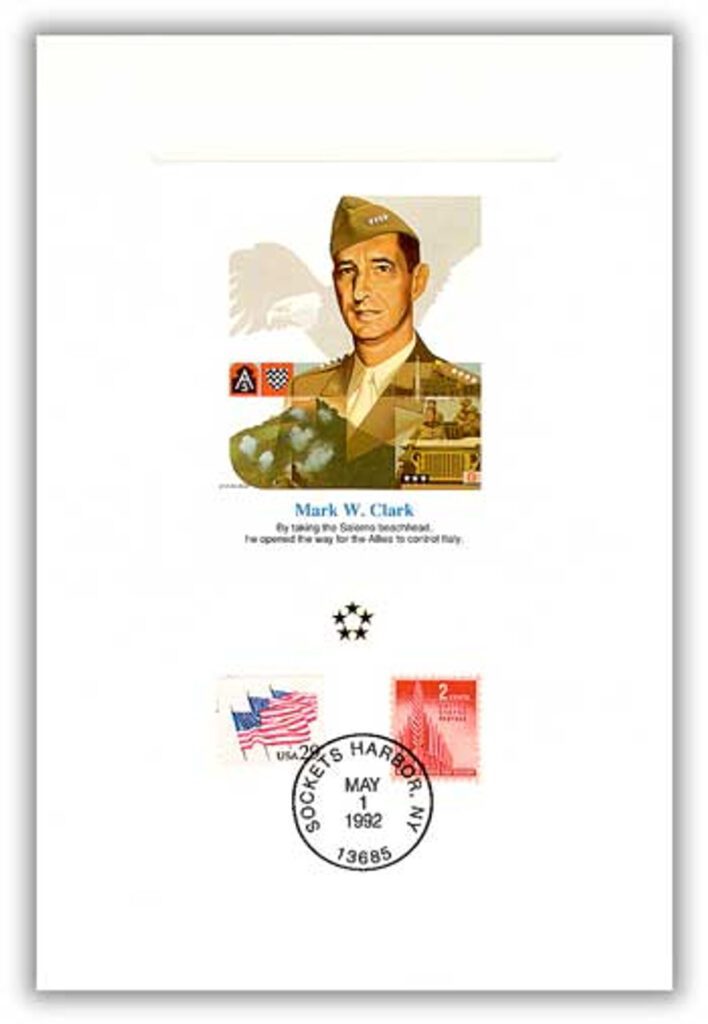
On June 4, 1944, Allied troops entered Rome, Italy, freeing it from German control. The city’s liberation came after months of hard fighting over mountains, across rivers, and in bad weather, against strong German defenses.

The Allies began their invasion of Italy in 1943. Before that, they had taken control of North Africa and invaded the island of Sicily in July 1943. After winning in Sicily, the Allies moved to the Italian mainland in September 1943. They landed at Salerno, near Naples. Italy surrendered on September 3, 1943, but German troops were still fighting in the country to stop the Allied advance.

In a series of head-on assaults the Allies slowly battled their way up the Italian peninsula. The Germans had set up many strong defensive lines. One of the most important was the Gustav Line, a line of fortifications across the country. It included the town of Cassino, which was very hard to capture because of its mountains and strong defenses.
The Allies tried many times to break through the Gustav Line. The most famous battle was the Battle of Monte Cassino, which happened in several stages between January and May 1944. Monte Cassino was a hill with a large old abbey on top. The Germans used the area around the abbey to defend the line. The fighting was brutal, with many soldiers killed on both sides. The Allies bombed the abbey in February 1944, thinking the Germans were using it, although this turned out to be a mistake. After months of heavy battles, Polish troops, fighting with the Allies, finally captured Monte Cassino in May 1944, breaking the Gustav Line.
While the Allies were trying to break through the Gustav Line, they also tried a surprise attack behind German lines, Operation Shingle. The landing at Anzio, about 30 miles south of Rome, occurred on January 22, 1944, and initially met little resistance. By midnight, 36,000 men had come ashore and occupied the beach some two to three miles deep. The plan was to go around the German defenses and quickly move inland to capture Rome.
But things didn’t go as planned. The Allies at Anzio stayed close to the beach for too long. This gave the Germans time to bring in more troops and surround the Allies and within two days had a force of 40,000 men in defensive positions ready for battle. The Allies launched their attack on January 30, gaining ground up the Via Anziate, but failing to take the town. For months, there was heavy fighting in the Anzio area. The soldiers were stuck in muddy trenches and under constant fire. Thousands of soldiers were killed or wounded. Finally, in May 1944, the Allies at Anzio were able to break out and join up with the main forces coming from the south.

With the Gustav Line broken and the Anzio forces moving, the Allies began their final push toward Rome in late May 1944. The Germans tried to slow them down, but they were running out of men and supplies. Allied forces—mainly American and British troops—moved quickly up the roads toward the city.
There was some disagreement among the Allied commanders. Some wanted to trap the retreating German troops, while others wanted to take Rome as quickly as possible. In the end, they focused on capturing the city.
The Allies launched two operations – Buffalo and Turtle, which would trap the German Tenth Army and allow the Allies to advance toward Rome. The operations were underway by the end of May, with the American forces taking Cisterna on the 25th. The Allies managed to destroy the German line by June 2.
On June 4, 1944, Allied forces entered Rome. The German army had pulled out of the city the night before, not wanting to fight street by street. Rome was declared an open city, meaning no one would fight there to avoid destroying its historic buildings and sites.
The people of Rome welcomed the Allies with great joy. Crowds filled the streets, waving flags and cheering. It was an important moment in the war—Rome was the first Axis capital (from the enemy side) to fall to the Allies.
General Mark Clark, who was at the forefront recalled, “There were gay crowds in the streets, many of them waving flags.… Flowers were stuck in the muzzles of the soldiers’ rifles and of the guns on the tanks. Many Romans seemed to be on the verge of hysteria in their enthusiasm for the American troops .…” The fall of Rome marked the final phase of the war. Two days later, Eisenhower’s forces landed in Normandy. And within the next six weeks, American bombers were able to hit targets in eastern Germany for the first time since the war began.
Click here for more WWII stamps.
| FREE printable This Day in History album pages Download a PDF of today’s article. Get a binder or other supplies to create your This Day in History album. |
Discover what else happened on This Day in History.





That was my Dad. Private Edgar Moore Coleman (1909-1990). A proud moment for him and his “buddies”. All passed on now.
God bless the American soldier
And the sailor, the marine, and the airman!
Love your daily stories!
My Uncle, James L. Carpenter (1920 – 2002), was there during the Italian Campaign. After attaining the rank of Staff Sergeant, he was awarded a direct commission on battlefield in Italy, and took command of a Platoon of 60 men. He ultimately served as Unit Commander. He was awarded battle star for Tunisian, Naples-Foggia, Rome-Arno, North Apennines, and Po Valley campaigns.
I was at Fort Jackson SC doing combat training. This was welcome news as it showed us that we
were making progress. But the big day was just three more days was D day. We enter the combat
after D day.
There aren’t many of you WWII veterans left. God bless you! Thank you for your sacrifice and service to our country, to freedom, to the world.
My Dad, Lewis Gibson Keel, helped provide naval support off the coast of Anzio on the destroyer escort Herbert E. Jones DE-137. I was very proud of him for his service.
It is historical stamp. Please send one peace for my collection
One can imagine the welcome that the Allies received. Good triumphs over evil! Thank goodness for the sacrifices made by the brave forces that stood up to the nazi’s.;
I lost a great uncle at Anzio. Who knows what promise died there?